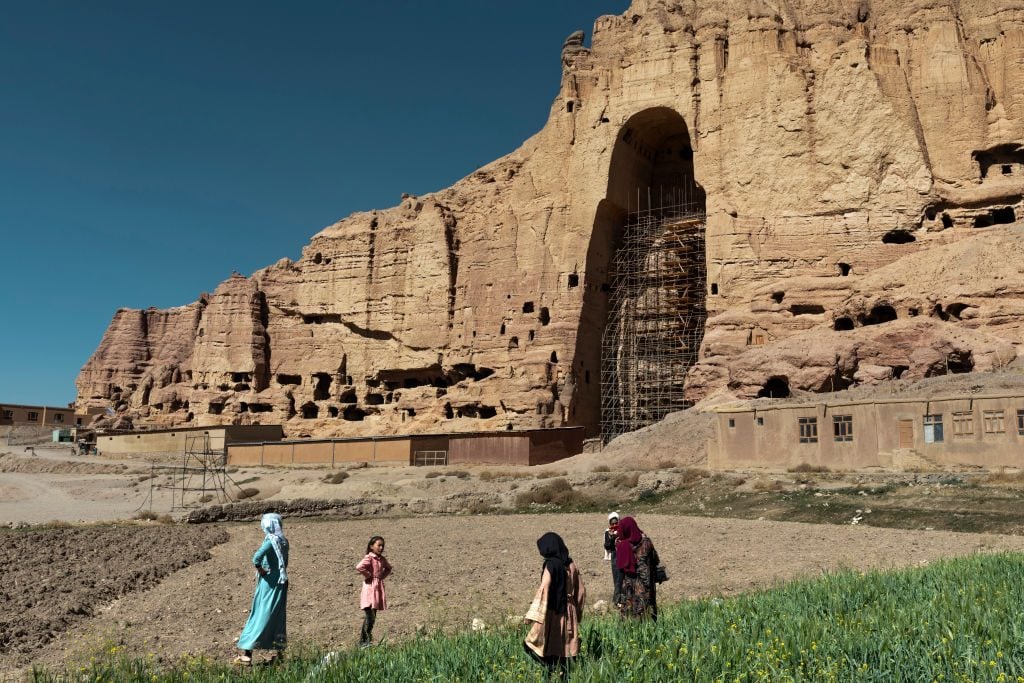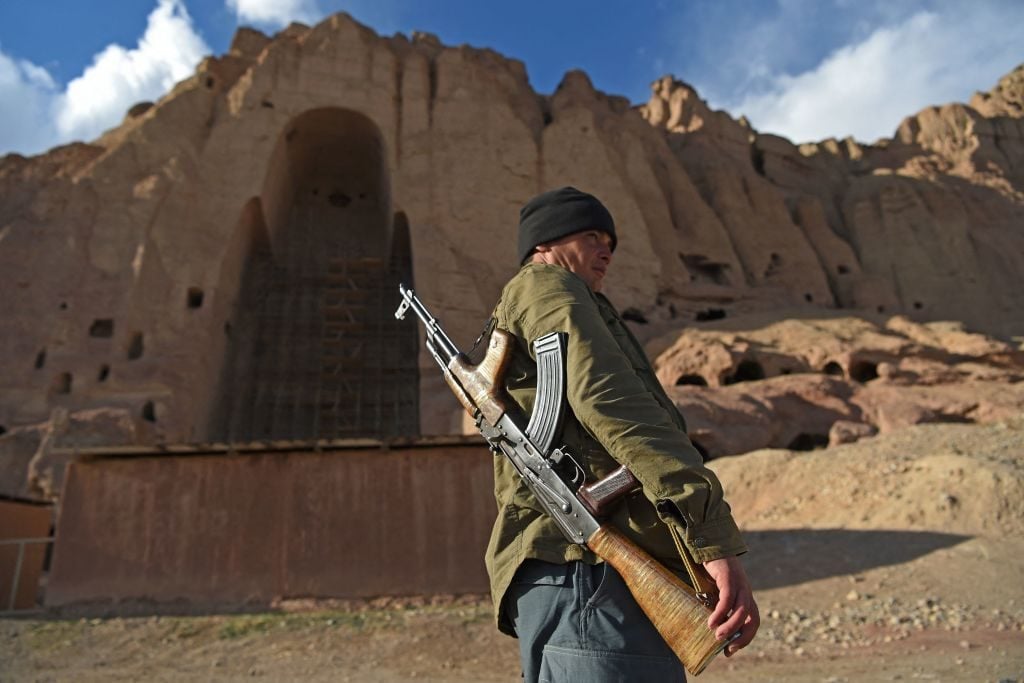Archaeology & History
A Rogue Taliban Governor Has Been Digging Beneath the Ruins of the Bamiyan Buddhas, Chasing a Rumor of Buried Treasure
Afghan scholars are horrified by reports of further devastation of the historic cultural site.

Afghan scholars are horrified by reports of further devastation of the historic cultural site.

Rebecca Anne Proctor

The Taliban governor of Bamiyan in Afghanistan has been digging beneath the remains of the Bamiyan Buddhas in search of buried treasure. Afghan scholars are horrified by the news of further devastation to the UNESCO world heritage site, where two colossal buddha sculptures were shockingly destroyed when the Taliban was last in power in 2001.
The Taliban has been eager to present a softer image to the world since the militant group recaptured Afghanistan last year, and even reopened the site of the remains of the 6th-century Gandharan Buddhas to visitors and tourists in October 2021. For $5 visitors could wander around and take pictures of the giant holes that remain in what were previously the buddhas’ faces.
But Mullah Abdullah Sarhadi, who took office as governor in November 2021, appears to have gone rogue after he heard a rumor that there was buried treasure hidden beneath the site. Locals reported to Artnet News that Sarhadi suddenly closed off the area surrounding the ruins in mid-January and ordered workers to look for treasure. When news reached the Taliban ministry of culture in Kabul, Sarhadi ignored orders to stop digging, stating that he was “in charge of Bamiyan.”
Hamid Naweed, Afghan art historian and former professor at Kabul University, whose work has involved in-depth research into the Bamiyan Buddhas told Artnet News that Sarhadi is looking for treasure like the Bactrian Gold Treasure, which was found in the tombs of Tillya Tepe, an archaeological site in northern Afghanistan when it was excavated in 1978.
“According to the rumor, there was possibly a princess that was buried in Bamiyan with all of her jewelry, but it has not been confirmed by any archaeologist,” Naweed said. “For sure, the rumor is not true, and we have no idea who put this idea of buried treasure in the mind of the governor, but he does not have the right nor the archaeological knowledge on his own and in a very unprofessional manner to do excavations in a place that is under the cover of UNESCO as a world heritage site.”

In this picture taken on March 3, 2021 a policeman patrols at the site of the Buddhas of Bamiyan statues, which were destroyed by the Taliban in 2001, in Bamiyan province. Photo by WAKIL KOHSAR/AFP via Getty Images.
Sarhadi is a Taliban hardliner and alleged war criminal. He served in senior positions during the 1996-2001 Taliban regime and was reportedly involved in early 2001 in a series of massacres at Bamiyan and in the destruction of the Bamiyan Buddhas. He was also reportedly held in Guantánamo for six years and released in 2012.
Various concerned Afghan professors, led by Naweed, have drafted SOS letters to UNESCO, which will be publicly released this week, demanding it step in to protect the world heritage site.
“We have received multiple accounts from trusted sources on the ground in Bamiyan, relating to digging going on at two sites, under the remains of the Colossal Buddha and at nearby suspected tomb sites,” reads part of the SOS letter to UNESCO written by ARCH International, the Alliance for the Restoration of Cultural Heritage, based in Washington DC.
Reached by Artnet News on February 7, the Taliban’s information and culture directorate in Bamiyan, Mawlawi Saif-ul-Rahman Mohammadi, said that the digging had stopped. “I am in the Buddha site right now and we are protecting all historical sites everyday very well and the archeological site is under control,” he said.
The Taliban government in Kabul has also claimed that Sarhadi has stopped digging, but local sources in Bamiyan and social media posts report that he hasn’t let anyone in to check, including several delegations from the ministry of culture, who were denied access to the area. The governor’s men are still blocking the road to the historic site, according to VOA’s Dari News Service. Concerns have also been raised that the governor is now filling the holes that were dug with concrete, further endangering the site.
Despite these assurances that the digging has stopped, Naweed remains concerned. “We still don’t know what is going on as the Taliban governor did this on his own under the influence of some people,” Naweed said, adding that locals have reported that the workers involved in the unauthorized digging do not speak either Dari or Pashto, the two official languages of Afghanistan, and that there are no impartial journalists left on the ground in Afghanistan to report accurately on the situation.
Until more can be verified and an international body like UNESCO can intervene, Bamiyan remains under threat of smuggling of international antiquities. According to Afghan Professor and archeologist Zemaryalay Tarzi, there is a lot of buried treasure in Bamiyan. In 2008 Tarzi found the remains of one 19-meter long giant sleeping buddha in the province. Tarzi is still on the lookout for a 300-meter-long sleeping Buddha described in the journal of Xuanzang, a Chinese pilgrim who traveled to central Afghanistan around 630 A.D.
While there may be lots of treasure to still find in Bamiyan “laypersons should not be randomly shoveling about amid artifacts belonging to a global heritage, and then when you are done, pouring cement on it,” Dr. Cheryl Benard, President of ARCH International told Artnet News. “Most of these items are very fragile. Some are made from unbaked clay. You have to know what you are doing or you will destroy more than you discover. Uncertain situations always encourage looting, so potentially Afghanistan could lose irreplaceable treasures.”